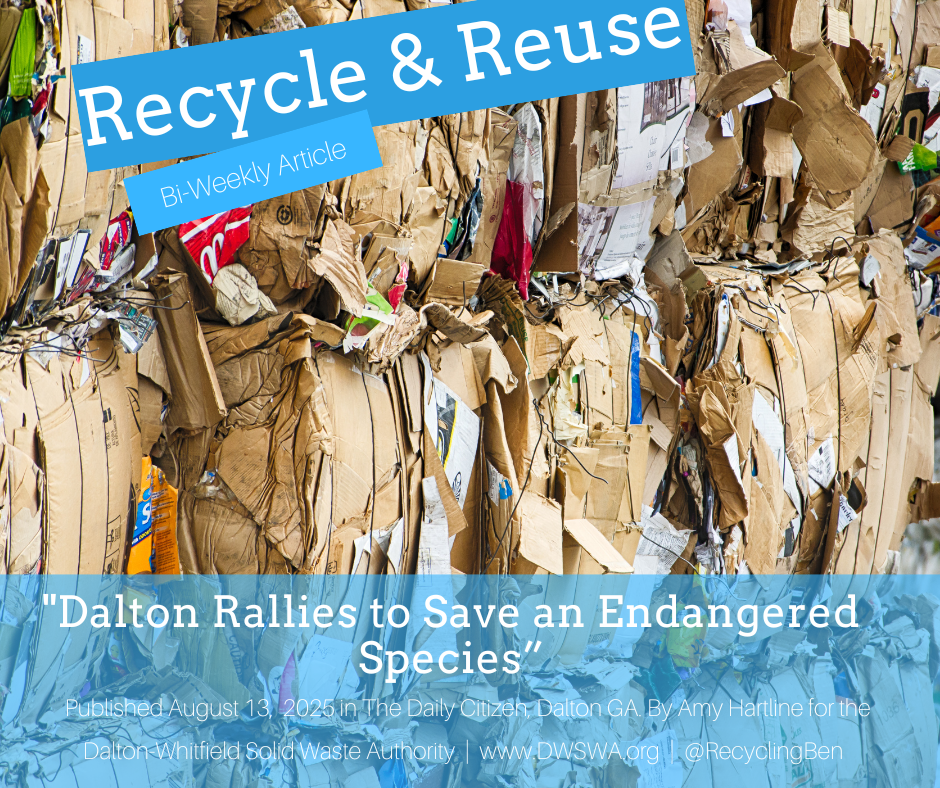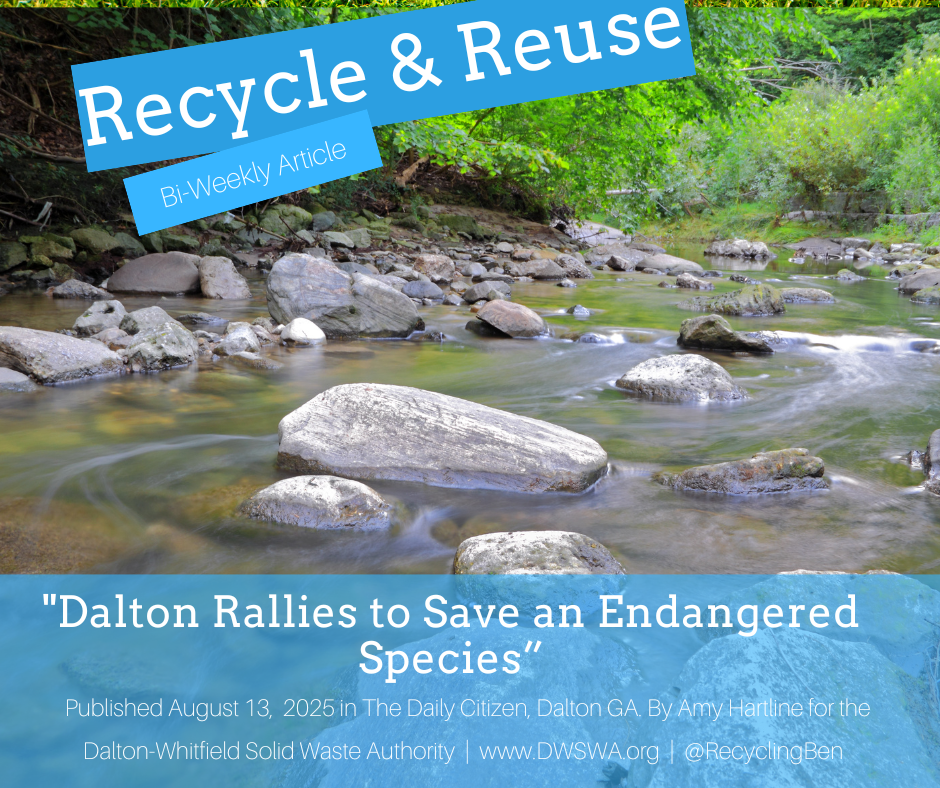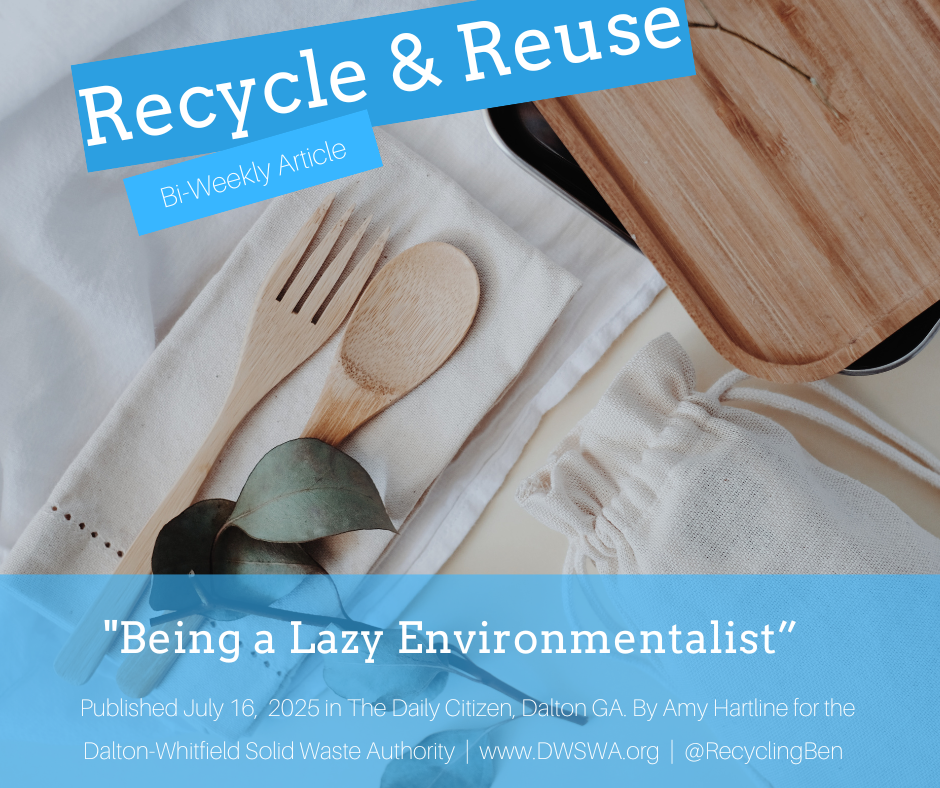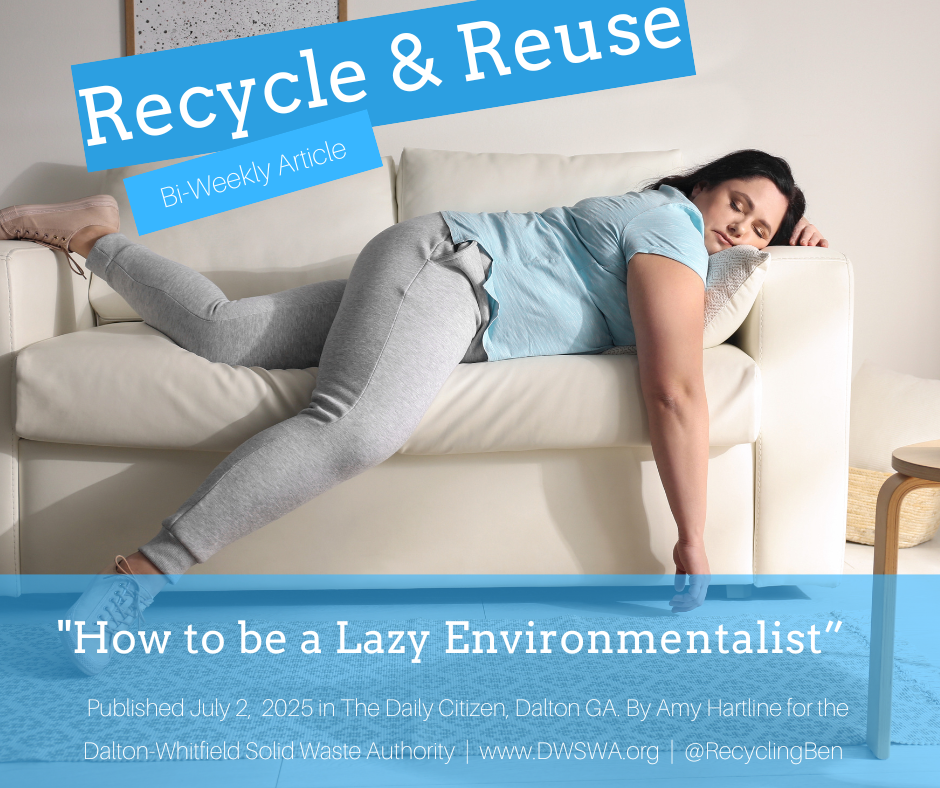Dalton's recycling rates need a boost, here's how you can help
/While we have many people in Dalton and Whitfield County recycling, our rates are not nearly as high as they could be.
Dalton’s curbside recycling rate hovers around 4% and each of the convenience centers calculate their own percentage and display it each quarter. As someone that reads this column, you are already more aware of recycling in our community than most residents and you can drive change and improve our community’s recycling efforts.
The first step in advocating for better recycling in our community is to educate yourself about how our recycling works. It is hard to teach anything that you are unsure of. The easiest way to do this is to visit dwswa.org, the Dalton-Whitfield Solid Waste Authority’s website. This site covers how waste is handled in our community and what types of recycling are accepted.
Additionally, social media can be a valuable tool for learning more. Follow both “Recycling Ben” and “Keep Dalton-Whitfield Beautiful” on Facebook and Instagram. These profiles often share behind the scenes looks such as what the inside of the recycling center looks like and other educational content on recycling such as what our plastic bottles are turned into.
Once you have a solid understanding, you have to share this information with others to grow your impact beyond your own bin. Use social media platforms, local newspapers and community bulletin boards to spread awareness. Personal conversations about recycling make a huge difference, whether it is from the recycling coordinator or just from you talking to your neighbor when you see each other bringing your trash cans to the curb.
A significant issue contributing to ineffective recycling in our area is a lack of public awareness. Many residents are either unaware of what materials can be recycled or don’t understand why they should bother recycling. Misinformation can lead to contaminated recyclables, making them non-recyclable and then sent to the landfill. By raising awareness about recycling and providing clear, accurate information you can help reduce contamination and increase how much we recycle as a community.
Engaging with local government officials can be a good way to show your support for recycling. Attend city council meetings and town hall meetings to voice your support for recycling and sustainability. Showing up and speaking out at these events highlights the community’s interest in environmental issues and can encourage broader participation.
If you are part of a larger organization such as a school, church or homeowners association, consider starting a Green Team. This group can meet regularly to discuss ways to promote recycling and waste reduction within the larger organization.
Together, you can create educational fliers, advocate for reusable options over single-use items and host events to educate the wider community on the importance and methods of recycling. If your organization puts out regular emails, newsletters or announcements add in a segment for recycling facts and reminders. You can even have the recycling coordinator, me, come visit your group to talk about recycling by scheduling a visit at dwswa.org.
You can promote reusing as a way to cut down on landfill waste by organizing a community swap or donation event. These events allow residents to exchange items they no longer need, such as clothing, toys, books and household goods, instead of discarding them. Promoting reuse through such events complements recycling efforts and fosters a culture of sustainability.
Advocating for improved recycling is often a long-term effort. Monitor the progress of Dalton and Whitfield’s recycling rates by reviewing the monthly reports on dwswa.org. Celebrate victories such as your neighbor finally getting a recycling bin or your local convenience center increasing its quarterly recycling rate and use them as motivation to continue.
Each small action you take, whether educating a neighbor, hosting an event or simply being diligent about your own recycling habits, contributes to a larger movement toward environmental sustainability. Together, these efforts can lead to a cleaner, greener and more connected community.
































